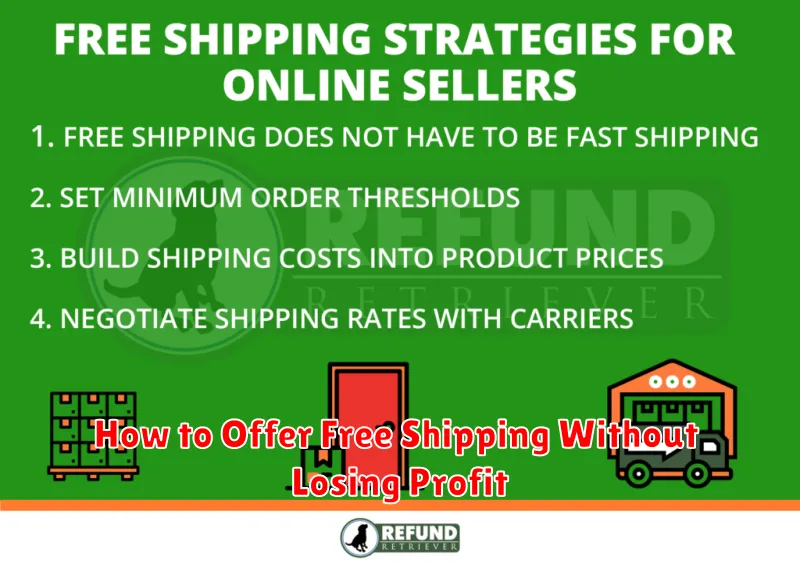Successfully running an online store hinges on efficient logistics and shipping. Understanding how to manage these crucial aspects is paramount to achieving customer satisfaction and business profitability. This comprehensive guide will delve into the intricacies of online store logistics, covering topics such as selecting the right shipping carriers, optimizing inventory management, calculating shipping costs, and implementing effective order fulfillment strategies. Learn how to streamline your operations, reduce shipping expenses, and deliver an exceptional customer experience, ultimately driving business growth.
Choosing the Right Shipping Partners

Selecting the right shipping partners is crucial for the success of your online store. Reliability and cost-effectiveness are key considerations. You need a partner who consistently delivers on time and offers competitive rates aligned with your business model.
Shipping options are another vital factor. Consider offering a variety of services to cater to different customer needs and budgets, including expedited shipping for those willing to pay more for speed and standard shipping for budget-conscious customers. Investigate whether your potential partners offer tracking capabilities, which are essential for customer satisfaction and resolving potential issues.
Scalability is important as your business grows. Ensure your chosen partner can handle increasing order volumes without compromising service quality. Finally, consider the customer service offered by the shipping partner. Excellent customer support is crucial for handling shipping-related inquiries and resolving potential problems efficiently.
Thoroughly research potential partners, comparing their services, pricing, and customer reviews before making a decision. Choosing the right shipping partners can significantly impact your brand reputation and overall success.
How to Set Shipping Rates That Make Sense
Setting competitive yet profitable shipping rates is crucial for online store success. Avoid losing money on shipping by accurately calculating your costs.
First, determine your actual shipping costs. Factor in packaging materials, labor, and carrier fees. Consider weight, dimensions, and destination.
Next, research your competitors’ shipping rates. Understand the market and find a balance between competitiveness and profitability. Don’t undercut yourself excessively, but also be mindful of remaining price-competitive.
Consider offering various shipping options to cater to different customer needs and budgets, such as standard, expedited, and free shipping (with a minimum order value).
Finally, regularly review and adjust your shipping rates. Monitor your profit margins and adapt your pricing strategy as needed to account for fluctuations in fuel costs, carrier fees, and other expenses. Transparency in shipping costs builds customer trust.
Packaging Tips for Safety and Brand Experience

Safe packaging is paramount to prevent damage during transit. Use strong boxes of appropriate size, avoiding excess empty space. Fill any voids with protective materials like bubble wrap, packing peanuts, or air pillows to cushion your products. Properly seal the box with strong tape.
Beyond safety, packaging significantly influences brand experience. A well-designed package can enhance the unboxing experience, making it more enjoyable for the customer. Consider using high-quality materials that reflect your brand’s image. Include branded elements like custom tape, tissue paper, or inserts with your logo and messaging. This creates a memorable and positive brand impression.
Clear and concise labeling is crucial. Ensure that the shipping label is clearly visible and accurately reflects the recipient’s address. Include fragile or handle with care labels where appropriate. A well-labeled package minimizes the risk of mishandling and ensures smooth delivery.
Sustainable packaging is increasingly important to environmentally conscious consumers. Opt for recyclable and biodegradable materials whenever possible. This demonstrates your commitment to environmental responsibility and enhances your brand image.
How to Handle International Shipping
Successfully navigating international shipping requires careful planning and attention to detail. Begin by understanding the destination country’s import regulations, including tariffs, duties, and any required documentation. This information is often available on the country’s customs website.
Choosing a reliable shipping carrier is crucial. Research carriers specializing in international shipping and compare their services, rates, and transit times. Consider factors like insurance options and tracking capabilities. Understanding the Incoterms (International Commercial Terms) will help clarify responsibilities between you and the buyer regarding shipping costs and risks.
Properly packaging your goods is vital to prevent damage during transit. Use sturdy packaging materials and ensure adequate cushioning. Clearly label packages with the recipient’s address and necessary customs documentation. Accurate and complete documentation will expedite customs processing and minimize delays.
Communicate clearly with your customers throughout the shipping process. Provide them with tracking information and keep them updated on any potential delays. Consider offering different shipping options to accommodate various budgets and timeframes. Offering international shipping can significantly expand your customer base, but thorough preparation is essential for success.
Managing Orders and Tracking Deliveries
Efficient order management is crucial for a smooth online store operation. A robust system should automatically process orders, update inventory levels, and generate shipping labels. Consider using order management software to streamline these processes.
Real-time tracking is vital for customer satisfaction. Integrate your shipping carrier’s tracking information into your system, allowing customers to easily monitor their package’s journey. Provide clear and easily accessible tracking numbers via email confirmations and order history pages.
Proactive communication is key. Automatically send order confirmations, shipping updates, and delivery notifications. Address any delivery issues promptly and professionally. Consider offering multiple shipping options to cater to customer preferences and budgets. Clear communication regarding shipping costs and estimated delivery times helps manage customer expectations.
Inventory management is closely linked to order fulfillment. Accurately track stock levels to prevent overselling and ensure timely order processing. Implement a system for managing returns and exchanges efficiently. Regularly review and optimize your processes to improve efficiency and customer satisfaction.
How to Offer Free Shipping Without Losing Profit

Offering free shipping is a powerful incentive for online shoppers, but it can significantly impact your profit margins if not managed effectively. The key is to strategically incorporate the shipping cost into your product pricing or to implement a minimum order value threshold.
One effective strategy is to raise product prices slightly to cover the average shipping cost. This way, you absorb the shipping expense without explicitly charging customers for it. Ensure this price adjustment remains competitive within your market.
Alternatively, you can introduce a minimum order value for free shipping. This encourages customers to purchase more items, increasing your overall order value and offsetting the shipping cost. Clearly communicate this threshold to customers.
Another option is to offer free shipping on specific products or categories. This allows you to strategically absorb shipping costs on higher-margin items, while charging for shipping on others. This requires careful analysis of your product profitability.
Finally, negotiate better rates with your shipping carriers. Higher shipping volumes often qualify you for discounted rates, directly reducing your shipping expenses and improving your profit margins. Regularly review and renegotiate these contracts.
By carefully implementing one or a combination of these strategies, you can successfully offer free shipping to boost sales while maintaining or even improving your profitability.
Dealing with Returns and Exchanges Professionally
Handling returns and exchanges efficiently is crucial for maintaining a positive customer experience and building brand loyalty. A clear and easily accessible return policy should be prominently displayed on your website.
The policy should clearly outline the timeframe for returns, the conditions for acceptance (e.g., unworn, undamaged merchandise), and the process for initiating a return. Specify who pays for return shipping – you or the customer – and whether a refund or exchange is offered.
Streamline the return process as much as possible. Provide a prepaid return shipping label for a smoother experience and avoid unnecessary delays. Ensure prompt processing of returns once received and communicate with the customer throughout the process. This includes sending email confirmations and updates regarding their return or exchange.
Consider offering a customer-friendly exchange option, allowing customers to swap items for a different size or color. This can significantly reduce the number of outright returns. Finally, using a reliable returns management system can greatly improve efficiency and reduce the administrative burden.
By handling returns and exchanges professionally, you demonstrate your commitment to customer satisfaction, fostering trust and encouraging repeat business. This positive experience can lead to increased customer retention and positive reviews, ultimately boosting your business.
Tools to Streamline Shipping and Fulfillment
Efficient shipping and fulfillment are crucial for online store success. Shipping management software automates processes like order processing, label generation, and tracking, saving time and reducing errors. Consider platforms that integrate with your existing e-commerce platform for seamless workflow.
Inventory management systems provide real-time visibility into stock levels, preventing stockouts and overstocking. These systems can also help optimize warehouse space and predict future demand, leading to smoother fulfillment operations.
Shipping rate calculators offer customers transparent and accurate shipping costs at checkout. They integrate seamlessly with various carriers, providing multiple options and allowing you to offer competitive rates.
Order management systems centralize order information from various sales channels, simplifying order tracking and management. This integration streamlines the process from order placement to delivery, improving efficiency.
Fulfillment centers, whether third-party (3PL) or in-house, can significantly improve shipping speed and efficiency, especially for businesses with high order volumes. They handle warehousing, packaging, and shipping, freeing up your resources to focus on other aspects of your business. Utilizing a Warehouse Management System (WMS) within your fulfillment center can further streamline operations.

